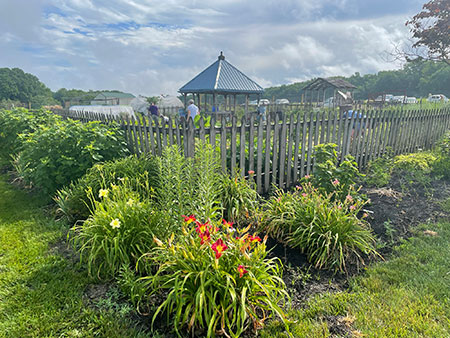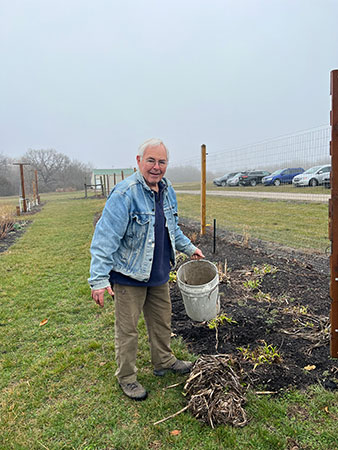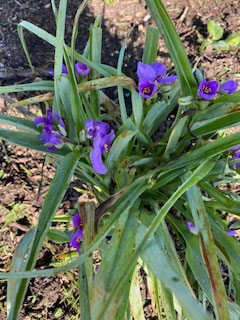Backyard Garden: Pollinator Garden

The Pollinator Garden's blooms provide food for pollinators from early spring through the fall seasons with the hope that pollinating insects will help maximize the harvest at the Backyard Garden.
 Points of Interest:
Points of Interest:
The pollinator garden surrounds the perimeter of the vegetable gardens. In addition, there are smaller beds at the entrance and front corners of the Backyard Garden. This is the second year of transforming from a more traditional perennial and ornamental garden to a garden which focuses on those plants that feed our pollinators.
We are building a wide variety of Zone 6a pollinators:
- Some of the trees and bushes in our garden include Hardy Hibiscus, Crepe Myrtle, Russian Sage and Butterfly bushes. Recently, a struggling new Pussywillow joined the Magnolia tree.
- Some of our growing list of pollinating flowers include: Azure Blue Sage, Bee Balm, Black-eyed Susan, Blazing Star, Catmint, Coneflowers, Grape Hyacinth, Tickseed, Passion Flower, Phlox,Verbena, Wild Indigo, and Yarrow.

Another showy feature of our garden is our large collection of Daylilies. This collection includes many cultivars which have been registered by prominent hybridizers. We also have several cultivars bred by one of our volunteers, Dr. Jock Mitchell, dating back to 1997. These flowers do well at the Backyard Garden, have a profusion of blooms, are drought resistant, and immune to heat stress.

One of the fragrant annuals which welcome visitors to the Backyard Garden are the Four O'Clocks, an old fashioned garden ornamental. The plant is hardy and re-populates via seeds each year. This annual is easy to transplant and makes a happy and colorful area that attracts bees & hummingbirds. The 4 O’Clocks open in the early morning sun and again in the late evening.
Tips for creating a pollinator garden: 
- Research the plants that are labeled the “Workhorses” for attracting pollinators in your zone. Work with your local extension to find the perfect plants for your garden areas.
- Start small with a pollinator area in your backyard. Consider trees, shrubs, perennials, and then annuals.
Plan for continuous blooms with your selected plants. Consider including pollinators for all seasons beginning with early spring, summer through the late fall. - Gardening is a great experiment. Growing Pollinators will be the same. Don’t be afraid to make mistakes & have fun!
 Websites to learn more about Pollinator Gardens
Websites to learn more about Pollinator Gardens

Garden Address
35230 W 135th St
Olathe, KS 66061
Master Gardeners are available to answer questions and provide tours while they work the gardens Wednesday mornings, March to October. To schedule a visit on another day (M-F), please contact us at bygjocoemg@gmail.com
Have questions?
The Garden Hotline is staffed by trained EMG volunteers and Extension staff who will assist you with questions.
Phone: (913) 715-7050
Email: garden.help@jocogov.org